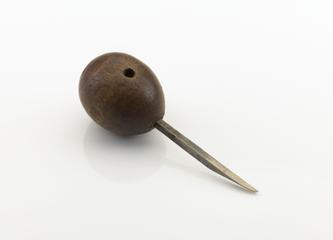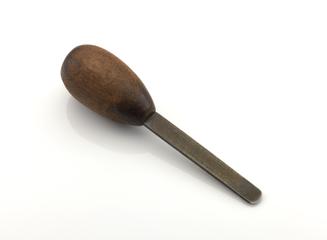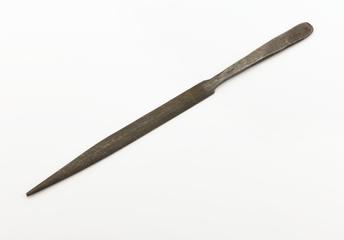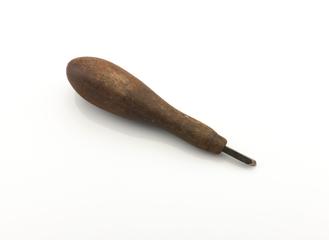
Wilson's self-acting valve gear
- Made:
- 1848 in Manchester
- maker:
- Robert Wilson
Drawing, dated 1848, of Robert Wilson's self-acting valve gear, for the steam hammer by James Nasmyth
This mechanism was invented in 1843 by Robert Wilson, one of James Nasmyth's business partners. The slide valve of the hammer is connected with a small overhead steam cylinder which always acts in such a way as to let steam below the hammer piston and so keep the hammer head up ; but a tappet on the tup, when a certain height has been reached, strikes a lever which reverses the slide valve and so lets the hammer fall. This reversing lever is carried on an adjustable fulcrum so that the reversal can take place at any desired lift of the tup. After reversal a catch retains the valve in this position, but when the blow is struck, a swinging arm on the face of the tup by its momentum strikes an arrangement of levers by which this catch is released, and the valve allowed to return to the position required for commencing the next lift of the hammer. in this way the whole energy of the fall is utilised before the steam is permitted to act again on the upward stroke, irrespective of the thickness of the forging under treatment.
Details
- Category:
- Hand and Machine Tools
- Object Number:
- 1932-158
- Materials:
- paper (fibre product) and ink
- type:
- drawing
- credit:
- Mr. W. Sisson




